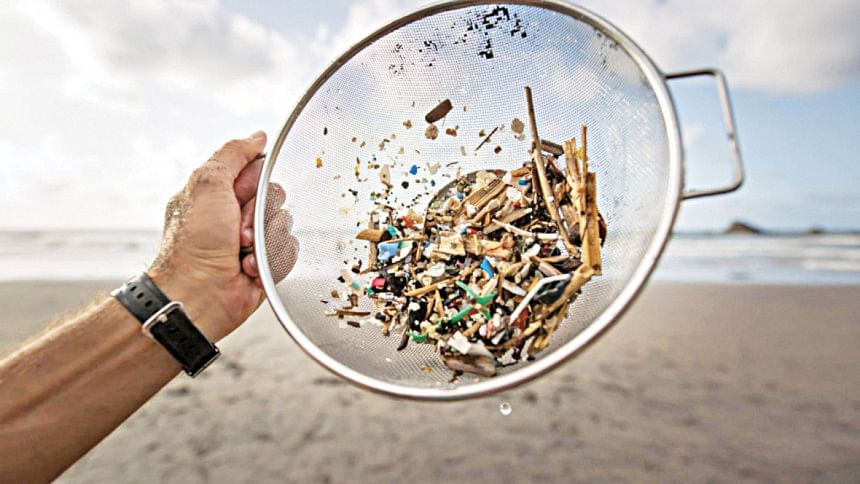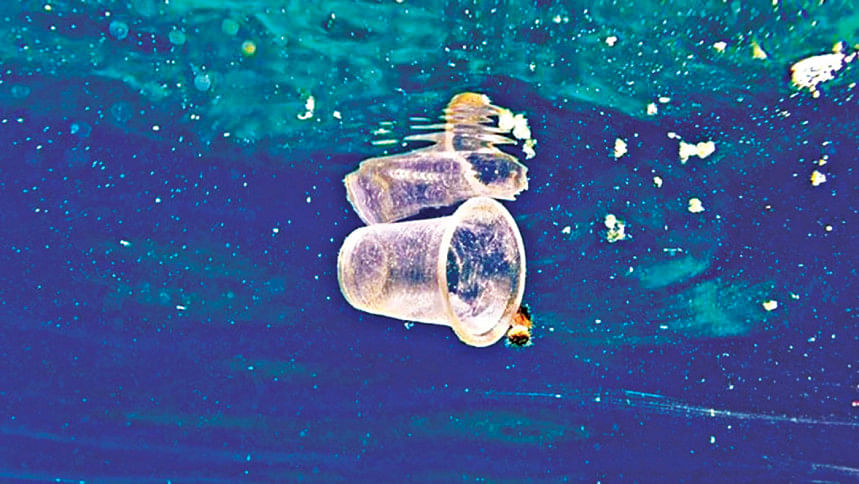Microplastics are everywhere

Microplastic particles are accumulating in riverbed sediments that entered Bangladesh through India's Ganges river, reveals a recent study published in Elsevier's ecotoxicology and environmental safety journal.
The study, titled "Distribution of Microplastics in Shoreline Water and Sediment of the Ganges River Basin to Meghna Estuary in Bangladesh," highlights the significant ecological risk posed to the river ecosystem and biodiversity.
This study marks the first in Bangladesh to underscore the serious threat posed by microplastics in transboundary rivers to the marine ecosystem.
It shows the role of rivers in transporting these microplastics into the marine system, creating a potential threat to land, water, and human health.
The 330-kilometre journey from the Ganges river basin to the Meghna estuary witnesses the deposition of microplastics in shoreline water and deep sediments.
The 330- kilometre journey from the Ganges river basin to the Meghna estuary witnesses the deposition of microplastics in shoreline water and deep sediments.
"We found tiny plastic particles of different colours and sizes, indicating the presence of microplastics both upstream and downstream in Bangladesh. The rates of microplastics varied, with different concentrations observed in different locations," says Prof Shafi Muhammad Tariq of Jahangirnagar University's Department of Environmental Sciences, a member of the research team.
According to World Health Organization (WHO), microplastics are an "emerging" pollutant in environment which has as a serious public health concern.
Exposure to microplastic particles has human health implications when they enter the human body through the environment, food, water and air.
Moreover, microplastics in water can float or sink based on its concentration, duration and degradation rate of the material. Chemicals associated with microplastics are also hazardous to aquatic life.

The research covered 10 districts in Bangladesh, collecting a total of 180 water and sediment samples from 30 sampling points stretching from Chapainawabganj to Chandpur's Meghna estuary.
The study revealed that the highest concentration of microplastics was detected near the Hardinge Bridge in Kushtia, while the lowest at Premtoli Ghat in Rajshahi.
The average microplastic concentrations in upstream and downstream water were recorded at 24 to 50 particles per litre and 26 to 64 particles per litre, respectively.
In sediments, concentrations ranged from 1,670 to 2,953 particles per kilogramme upstream and 1,717 to 4,014 particles per kilogramme downstream.
The study identified seven polymer types in water, dominated by low-density polythene (LDPE), and eight polymer types in sediment, dominated by polyamide (PA).
Prof Tariq expressed concern about the findings, stating, "We are now living in a plastic age where plastics are everywhere. Our research found a high level of microplastics in the river system, posing a threat to both human health and aquatic species."
"Microplastics contain toxic chemicals that persist for years without dissolving," he added.
Public health experts echoed these concerns, emphasising the direct toxicity, bioaccumulative nature, and incorporation into the food chain of microplastics.
Abu Jamil Faisal, president of the Public Health Association of Bangladesh, said, "Microplastics are considered a cause of cancer, containing harmful chemicals that can lead to various diseases. They can affect the lungs, be found in the blood, and induce hormonal changes, impacting reproductive health."
"Widespread microplastic pollution necessitates urgent monitoring," he added.

 For all latest news, follow The Daily Star's Google News channel.
For all latest news, follow The Daily Star's Google News channel. 



Comments